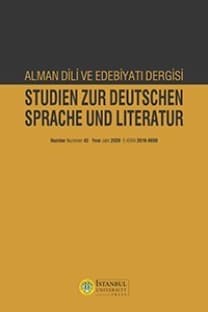Italia – Arcadia? On the connection between the autonomy of art and the death of the artist
Öz Both the titular figure of Hugo von Hofmannsthal’s lyrical one-act play Der Tod des Tizian and Thomas Mann’s neoclassical writer Gustav von Aschenbach die just in or near Venice, which frees them from a substantial crisis of artistic self-legitimation. The Italian scenery – filled with traditional topoi of the utopian imagination of Arcadia – transports the normativity of a harmonious unity of the self and the world, art and life – both texts scrutinizen this aspect. Hofmannsthal and Thomas Mann render ‚Arcadia’ as a poetic and creative reference point to illustrate the rootlessness of the modern artist. The non-place Arcadia – as the origin myth of art and the ideal image of an organic and harmonious integration – serves as a basis for nagotiating the ongoing problem of artistic self-positioning.
Anahtar Kelimeler:
Arcadia, Death oft the artist, Classical German Literature, Aestheticism, Autonomy of Art
___
Valdez Damian (2014): German Philhellinism. The Pathos of the Historical Imagination form Winckelmann to Goethe, Palgrave Macmillan, New York.- Başlangıç: 1954
- Yayıncı: İstanbul Üniversitesi
